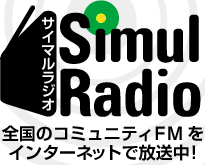Lace Corners and Mats |  |
Since you need so many bobbins to produce quite a thin piece of lace, bobbin lace tends to be long thin strips. In the past, for cheap lace, this was how it was made and sold. If you wanted to edge a handkerchief, for example, you simply gathered the lace at a point so the edge of the lace could go round the corner. Nowadays, people prefer to construct lace corners as part of the pattern. You may have a lace pattern with a corner already and not know how to work it, or you may wish to design your own corner from an edge pattern. This page covers both.
| Working a corner Designing a corner Mats Finishing an edge or mat |
Working a corner
 | If you already have a lace corner pattern, it will look something like the pattern on the left if perhaps less colourful! (I always like to colour my patterns so I can see what I'm doing.) The first thing you need to do is to work out where the corner line is. This is a line from the inside of the corner to the outside. You can even draw it on the pattern (see right). |  |
 | Carry on working the lace until you get down to the corner line (the blue line), but do NOT work over it. This means that you will end up with a bottom diagonal line of worked lace, with the bobbins hanging downwards as usual. See left. The already worked lace and the hanging threads are shown in grey. Now to turn the corner. Turn your pillow round so the bobbins and thread now lie over the unworked pattern. This is a clockwise turn and means that the already worked piece goes off to the right (if you have the footside on the right, as most English lacemakers prefer). It should now look like the picture on the right. You'll need to move the bobbins carefully so they hand downwards in the new direction. Now just carry on working the lace! You will find that the outside bobbins have to do much more work than the inner ones. Certain threads have to be considered as well. In this patter, two pairs of bobbins come out of the top corner fan, and need to do something before entering the bottom corner fan. You could plait them, perhaps. |  |
 | This photo shows an edging in the process of being worked. You can see the start is in the middle of a side. The pillow has already been turned twice, to go round two corners, and now the bobbins are working down the third side. Most of the pins are just behind where the current working is, but a few pins are holding the rest of the lace in place, so when you come to the end, it matches up to the beginning. You can't see the pins holding the start in place, as they have been pushed in up to their heads, to stop the pins catching om bobbin threads later. I suspect that I have also left a pin or so at the corners and edge, to keep the shape. These are not really necessary. |
 | Designing a cornerWhat happens if your pattern doesn't have a corner? Let us assume that you are starting with the pattern on the left. You want to make it into a corner. First, you must find the corner line. This is not as easy as with an existing corner, as there are several places that you can draw the line. You must find the one you like best. However, there is a rule - you must NOT cross any lace design except simple ground. Also you must get the line sloping the right way. You want the footside on the inside of the corner, and the headside on the outside, so the line must slope to give you less footside and more headside. You can see on the right that there is really only one place in this pattern where you can draw the line, and even then it clips a headside fan. |  |
 | Now get rid of all the pattern that is below the corner line (see left). Mirror the pattern above the line to continue below the line, but of course, twist it through a right angle (see right). This is almost exactly like the pattern above, but you will see a pair of threads right at the edge of the corner, apparently heading off for nowhere. These are the threads that I suggested you plaited with the other pair. You have now ended up with the corner design that we saw above, but you have constructed it yourself. |  |
The reason why you cannot have any stitch but simple ground crossing the line is that the threads crossing the line change direction. They start going from left to right diagonally, but after you turn the pillow, they are going from right to left diagonally. For simple ground, you don't mind. As long as you have two pairs of threads at right angles, you can work them. But spiders and diamonds and fans have a very definite sense of direction, and so get confused. You can have spiders and diamonds and fans lying right next to the corner line, but they must not cross one.
 | If you find nowhere to draw the line at all, then draw it between two headside designs, and continue it through the rest of the pattern, even if it goes over a spider of a diamond. Then replace the mutilated spider or diamond with some simple ground stitches. If you like, you can make the diamond smaller, so it comes up to the line, but not over. You can't even do that with a spider! Here are two attempts to make a corner of the left-hand pattern, putting the corner line in different places, and filling with ground stitches as necessary. No, you really cannot continue that diagonal across the corner, however much you want to! The worker pair goes in entirely a different direction once you've turned the corner, and it just won't work. |  |  |
It is possible to have a corner through rose ground, but you need to have the corner line go between the rose ground squares, not through one. See the diamond mats designs for a further discussion of this. It would also be possible to do the same trick with triangular ground, although the triangles would end up pointing in different ways either side of the corner line. Any of the simple grounds will work in corners.
Mats
 | The designs above are edging with corners. You would use it to trim a handkerchief, or rather, you would fill the inside hole of the lace with material in order to make a trimmed handkerchief, or perhaps a mat or even something bigger (if you have the patience!) However, using this technique, it is possible to make a mat which is ALL lace. Here, instead of an edging which ends in a diagonal and then is turned to go in a different direction, you have a pattern which is a triangle, repeated four times to make a square. See right, with the corner lines marked in red. You work it in the same way as above, but the bobbins in the middle of the mat will only be used in a few stitches. See the small mat for a description of how to work this pattern. |  |
 | You can make bigger mats by making them a bit at a time. The mat on the left was made in two parts. Since they were designed to fit together exactly, the two pieces can be sewn together afterwards. The red line shows where the join happens. Click here for a description of how to make this mat. You can join the edging to the centre of the lace (or one edging to another) while you are working the second piece, but it requires the first piece to be left on the pillow while doing the second. Leave all pins in the first piece along the edge to be joined (and possibly the next row as well). Push all pins in right up to their heads so they don't catch on future threads from bobbins. Click here for an explanation of the relevant stitch. It needs a crochet hook. You can make another edging to go round the edge of that as well, if you want, and so end up with a mat as large as you want, as long as you have a big enough pillow, and enough patience! If you look at old bobbin lace mats, you can see that they used this technique, and where they sewed it. (Sometimes the sewing comes undone!) |
 |  |
| You can even make a mat as a spiral, starting at the centre, and then gradually working outwards, joining the lace that you are working on to the previous edge that you've worked. Click here for an example of this. | You can make hexagonal mats as well. These will need to be designed using a hexagonal grid. You will have to turn the pillow six times, rather than four, but the technique is very similar. This mat is described here. |
 | Finishing an edge or matNormally when you finish lace, you simply knot each pair of threads (click here for a description.) But a mat or continuous edge is finished in a different way. When you start a mat or continuous edge, you will have a row of starting pins. Usually these pins get removed after a bit, while working down the lace and removing pins to use later. But here it's best to leave the single row of starting pins and push them into the pillow up to their heads. You do this to stop the threads catching on these pins as you turn the pillow to work the different sides of the mat or edge. You can remove the rest of the pins as normal. That means that when you have finished working the entire mat, the last bit should line up with the first bit. If you look at the pattern on the left, imagine that the green part is where you started the lace edging, and the pink bit is where you are finishing it. You should see that every pair of threads you have at the finish should match with a loop round a starting pin which leads onto a starting pair of threads. There are arrows pointing to a finishing pair and starting pair which match. Now, gently lever up the starting pin, which will allow you to access the starting loop. (Probably it's not a good idea to remove the pin altogether, as it's helping you to keep the lace in shape.) Unwind the pair of bobbins and cut off the excess thread if necessary, but leave a good bit to do the tying. Now take one of the threads and get it through the starting loop. I thread it onto a needle to do this! Now you can tie this thread to the other thread of the pair, and they are caught in the starting loop, which joins the end part of the lace to the starting part. It's probably better to do a reef knot rather than an overhand knot, as reef knot ends lie across the lace and seem to fade into the normal lace pattern. It never looks perfect, but it's surprising what a non-lacemaker doesn't notice! See if you can spot the joins in the mats below. It's easier to see when the start/finish line is in the middle of ground, but harder when the start point runs along the edge of a solid area. |








































































































































.jpg)















































.jpg)





































































































No comments:
Post a Comment